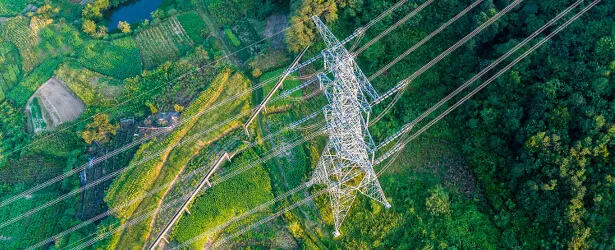ANTONIO CAMMISECRA Yes, we are very proud of being one of the most advanced, probably the first fully digitalized grid in the world. This basically comprises of three things. The first and the most iconic thing is the digital meter. Everything starts with having our customers served through a digital meter that now is reaching the third generation. The second is a digital system that can let the information flow from the meter all the way back to our servers in order to collect data in real time, in order to understand the level of consumption, the level of service and possible information about the consumers. But, also, about any other piece of equipment in the chain from our centres to the point of delivery.
So, we have digital tools, not only the digital meter, we have digital tools in the primary and secondary substations so that we can in real time monitor the flows, monitor the conditions and act on them. So, the second piece, in order to be able to act, is a very high level of automation. So, you have digital tools, but also an initial level of robotization. So, we need to actuate, we operate on our piece of equipment from a distance, and so, we need to have a tele-controlled, tele-commanded switchboard, switch gears, and any other piece of equipment must be remotely operated to the maximum extent as possible.
The third is a digital brain that can do all this work in a very fast way. We call it self-healing. So, if we have a problem in a point of the grid, the old-fashioned way was through trial and error, so go and try to check where the problem is and then go and send some people to act. Now, with all this digital equipment spread across the entire network, automatically the grid tells us where there is problem. So, we have not to ask the grid. The grid is telling us, guys, we have a problem here. And actually, while the grid is telling us, the grid is also self-performing the reconfiguration of the grid in order to solve the problem. Then of course, very quickly, we need to send people to fix the problem if it's a physical problem, or just do a reset if it's a digital problem.
So, it started with the digital meter, then going up in the chain we have a digitized, and we are still digitizing, the substations, primary, secondary, medium voltage substations. And now we are introducing more advanced technology in all our terminals, in all our areas of the grid, locating in the peripheral areas of our grids an immense computing power. Because this will serve for the grids of the future where the grids will not only deliver power, but will also feel what's happening in the environment, collecting so many other data that will create really a difference with the way the grid was managed in the past.
So, it's not an easy journey because, of course, if you have only the digital world completely separated by the physical reality, you don't know what to do with it. So, the interaction between the two things is probably the most challenging part in our view and, of course, it becomes even more complex when you move into emerging countries where the fragility of the network is even more evident. But we have accumulated almost 20 years of experience. We started at the beginning of the first decade of the third millennium, now we are at the third generation with the digital meter, and actually we are starting to think about the fourth. And the fourth generation of the digital meter will be capable of doing extraordinary things that we don't even know today. So, that's the way we are approaching the new way. It must be like the introduction of the iPhone or the iPad, just to make an example, so something completely different that it's so new that we didn’t even desire it before, because we could not think of it before seeing it for the first time.
